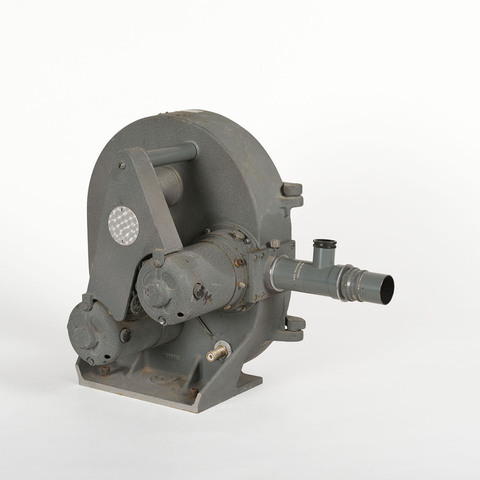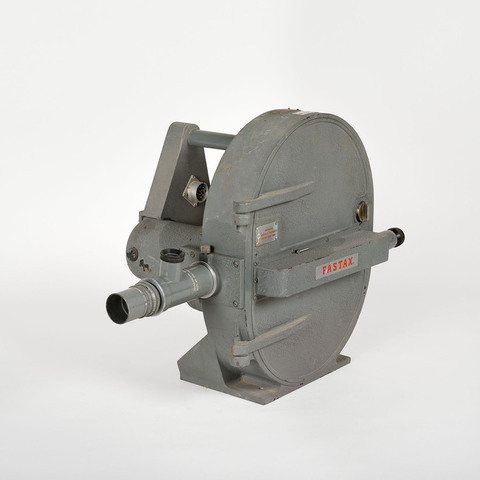Caméra grande vitesse film 16 mm
Fiche détaillée
Type de l'appareil
entraînement du film 16 mm en continu par un débiteur denté ; vitesse 350 à 9000 images/seconde ; obturateur à prisme rotatif quatre faces ; emplacement intérieur pour une bobine débitrice et réceptrice 120 m. ; deux moteurs électriques incorporés, l'un pour l'entraînement du prisme-débiteur, l'autre pour le film ; viseur reflex ; viseur sur objectif oscilloscope
Auteurs
Informations non disponibles
Fabricants
Wollensak Optical Company
Rochester 21, New York
Utilisateurs
Informations non disponibles
Distributeurs
International Division 3M Company
Saint-Paul 1, Minnesota
3M Company
Paris, 135 bd Sérurier
Sujet du modèle
Informations non disponibles
Objectif
Wollensak Fastax Raptar 50 mm f. 2 n° D 69 925
Taille de l'objet
Ouvert :
Informations non disponibles
Fermé :
Longueur : 57 cm
Largeur : 29 cm
Hauteur : 42 cm
Diamètre :
Informations non disponibles
Taille de la boîte de transport
Informations non disponibles
Remarques
Marque : "Fastax 16 mm WF4 High Speed Camera 3M Wollensak Division Revere Camera Company, Rochester 21, N.Y., a subsidiary of 3M Company, ser. n° 416-395" ; "ES. MES. Effets. ext. 42/17 956".
"La caméra Fastax est de construction américaine et a été utilisée pendant la guerre pour l'étude de phénomènes électriques, physiques ou mécaniques. Trois modèles ont été construits : film 8 mmn vitesse 8000 images par seconde ; film 16 mm, vitesse 4000 images par seconde ; film de 35 mm, vitesse 3500 images par seconde. Cet appareil est du type à mouvement continu sans obturateur. Le mouvement continu est donné par le déplacement conjugué d'un prisme à 4 faces pour les formats 16 et 35 mm, et d'un prisme à 8 faces pour le film 8 mm" (La Cinématographie française, n° 1210, 31 mai 1947).
"Fastax Cameras are the continuous moving film type with rotating prism positioned between the lens and the sprocket. The prism rotates in synchronism with the film creating successive and properly spaced images traveling with the film. The image gathered by the lens is refracted by the prism upward to meet the incoming frame and as the frame advances downward, the image follows, thereby permitting continued exposure throughout the period that the film passes the aperture. The camera is driven by two one-quarter horse-power, 120 volts universal motors, one drives the takeup spindle and the other the sprocket and rotating prism. Designed to operate on full initial voltage impact up to 140 volts the Fastax does not require preliminary accelerating equipment. Above 140 volts a "Goose" control unit is recommended to secure the higher speeds. A 100 foot film takes from 7/10 of a second to 25 seconds to pass depending upon the number of pictures per second desired. The camera is capable of accelerating to maximum speed within the first 35 feet of film, thus permitting 65 % of a 100 foot roll of film to be exposed at full speed" (Fastax High-Speed Motion Picture Cameras, Rochester, Wollensak Optical Company, 1954).
Bibliographie
La Cinématographie française, n° 1210, 31 mai 1947.
Brochure Fastax High-Speed Motion Picture Cameras, Rochester, Wollensak Optical Company, 1954.
Brochure Caméras Fastax, Paris, 3M Company, s.d.
Catalogue Fastax High-Speed Motion Picture Cameras, Rochester, Wollensak, 1957.

